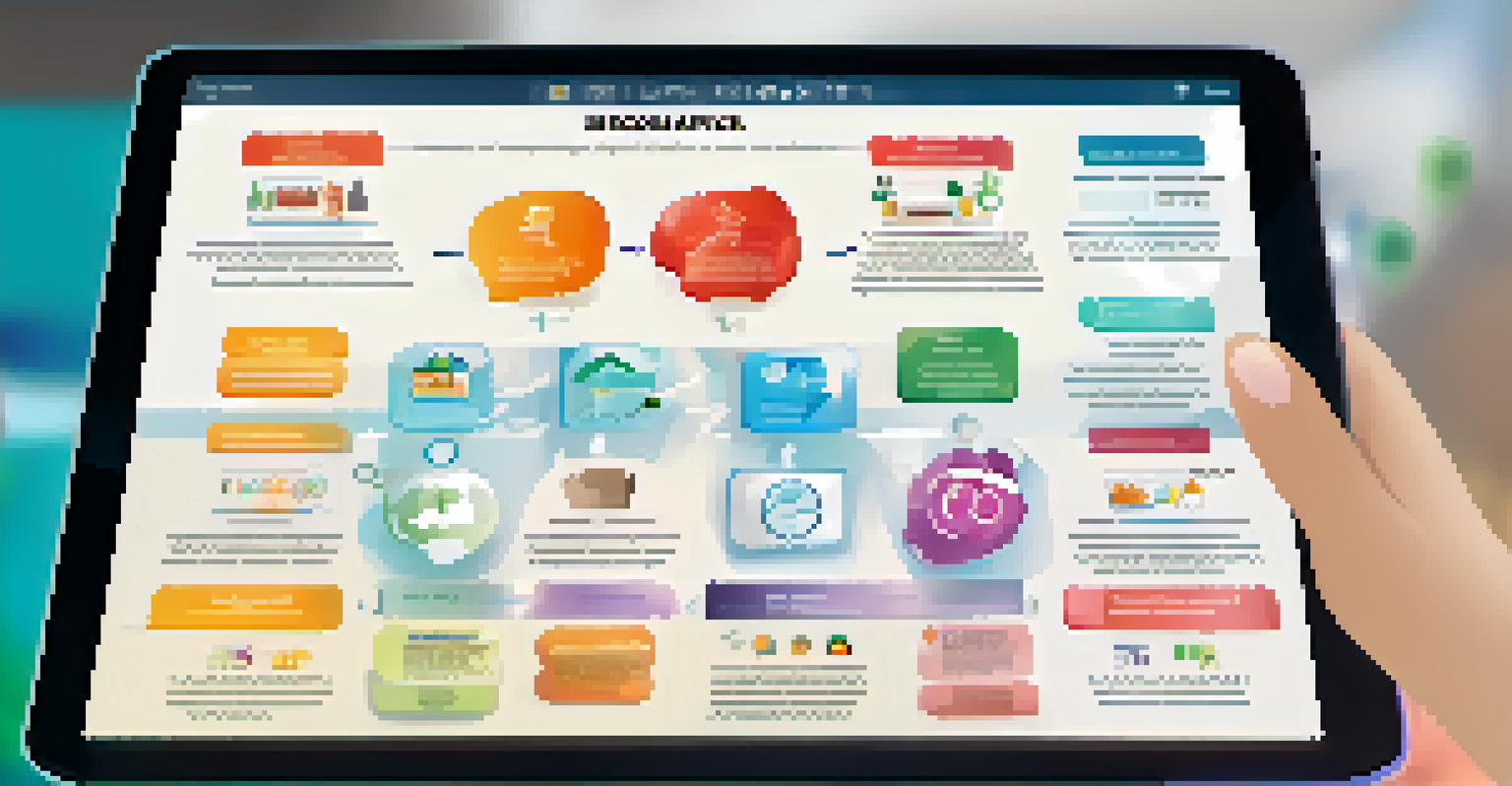Best Practices for Implementing Microlearning Strategies

Understanding Microlearning: What It Is and Why It Matters
Microlearning is a targeted approach to education, focusing on short, digestible content that learners can easily absorb. Think of it like snacking on bite-sized pieces of knowledge rather than tackling a full-course meal. This method not only enhances retention but also fits seamlessly into our busy lives, allowing for learning in small, manageable doses.
The beautiful thing about learning is that no one can take it away from you.
In today's fast-paced world, where attention spans are shorter than ever, microlearning emerges as a practical solution. It addresses the need for quick, effective learning that can be accessed anytime, anywhere. By breaking down complex topics into simpler, focused lessons, we cater to various learning styles and preferences.
Embracing microlearning can lead to higher engagement levels and improved performance. Just as a quick coffee break can rejuvenate our energy, short learning modules can refresh our skills and knowledge, making it easier to apply what we learn in real-time.
Identifying Learning Objectives for Microlearning
Before implementing microlearning, it's crucial to define clear learning objectives. These objectives act as your roadmap, guiding content creation and ensuring that each micro-lesson serves a specific purpose. Consider what skills or knowledge you want learners to gain and how that aligns with their needs.

Think of your learning objectives as the foundation of a house. If they're shaky or unclear, the entire structure risks crumbling. In the same way, well-defined objectives lead to more focused content that resonates with learners and maximizes impact.
Engagement Through Microlearning
Microlearning enhances learner engagement by providing short, interactive content that fits into busy schedules.
By identifying these objectives upfront, you also facilitate better assessment of learning outcomes. After all, how do you know if the training is effective if you haven't established what success looks like from the start?
Choosing the Right Format for Microlearning Content
The format of your microlearning content is just as important as the content itself. Options range from short videos and infographics to quizzes and podcasts; each format offers unique advantages. For example, a quick video can visually demonstrate a concept, while a podcast allows for learning on-the-go.
Tell me and I forget. Teach me and I remember. Involve me and I learn.
Consider your audience's preferences when selecting formats. If your learners are often commuting, audio content might be more suitable. Alternatively, if they thrive on visual aids, infographics or video snippets could be more engaging.
Ultimately, a mix of formats can cater to diverse learning styles and keep the content fresh and engaging. Just like a well-balanced diet, incorporating various formats ensures that your learners receive the nutrients they need—without getting bored!
Incorporating Interactive Elements in Microlearning
Adding interactive elements to your microlearning modules can significantly enhance engagement. These elements could include quizzes, polls, or even scenario-based learning that requires active participation from learners. When learners interact with the material, they are more likely to retain information.
Consider this: when you participate in a conversation, you're more engaged than if you're simply listening to a lecture. The same principle applies to learning. By fostering an interactive environment, you promote deeper understanding and encourage learners to apply what they've absorbed.
Define Clear Learning Objectives
Establishing clear learning objectives is essential to guide the creation of focused microlearning content.
Additionally, interactive elements provide instant feedback, which is crucial for learner development. When learners can immediately see how well they understand a topic, they can adjust their focus and improve their skills in real-time.
Leveraging Technology for Microlearning Delivery
Technology plays a pivotal role in the success of microlearning strategies. Learning Management Systems (LMS), mobile apps, and social media platforms can all serve as effective delivery mechanisms for microlearning content. These technologies enable learners to access materials at their convenience, promoting a culture of continuous learning.
Imagine having an entire library of knowledge at your fingertips, accessible whenever you need it. That's the power of leveraging technology in microlearning. It allows for flexibility, ensuring that learners can engage with content in a way that suits their schedules and lifestyles.
Moreover, utilizing technology can also facilitate tracking and analytics. This means you can monitor learner progress and adjust your content as needed, much like a coach tweaking a training regimen based on athlete performance.
Measuring the Effectiveness of Microlearning Approaches
To truly understand the impact of your microlearning strategies, measuring effectiveness is essential. This can be done through surveys, assessments, and tracking changes in performance metrics. By gathering data, you can determine what works, what doesn't, and how to optimize your approach.
Think of measurement as a compass—you need it to ensure you're heading in the right direction. Without it, you could easily stray off course or miss opportunities for improvement. Regular evaluations help you make informed decisions about your microlearning content and delivery methods.
Leverage Technology for Accessibility
Utilizing technology allows for flexible access to microlearning materials, promoting a culture of continuous learning.
Additionally, feedback from learners can provide valuable insights into their experiences. Engaging with your audience allows you to better cater to their needs and continuously refine your strategies for maximum effectiveness.
Creating a Culture of Continuous Learning with Microlearning
Implementing microlearning is not just about delivering content; it's about fostering a culture of continuous learning within your organization. Encourage learners to view microlearning as a tool for personal and professional growth rather than a one-time training session. This mindset shift can lead to higher engagement and motivation.
Consider how you can promote ongoing learning opportunities outside of formal training sessions. Sharing resources, creating discussion forums, or hosting informal learning events can contribute to this culture. Just like a garden, continuous learning needs nurturing and attention to thrive.

When employees feel supported in their learning journeys, they are more likely to take ownership of their development. By embedding microlearning into your company culture, you create an environment where knowledge is valued and pursued actively.